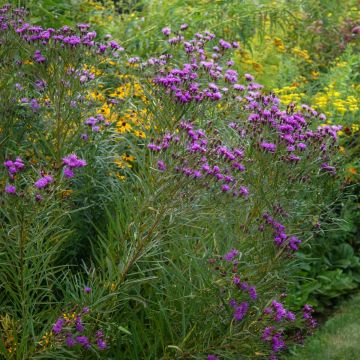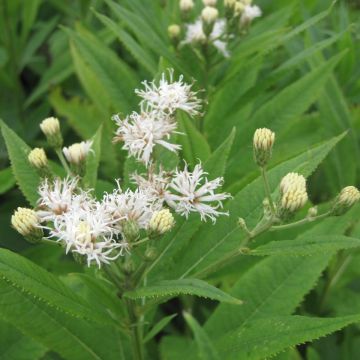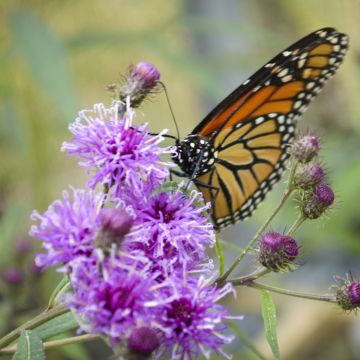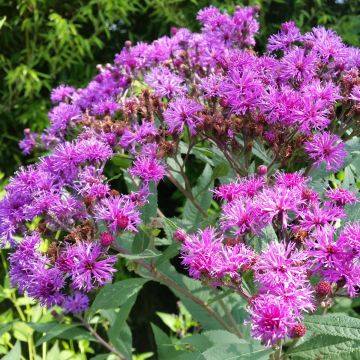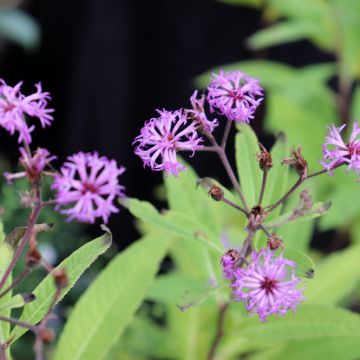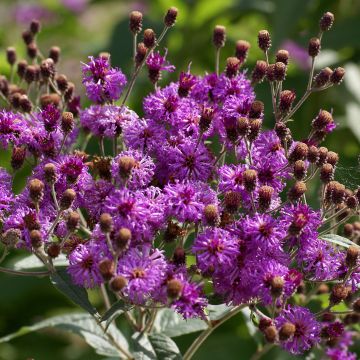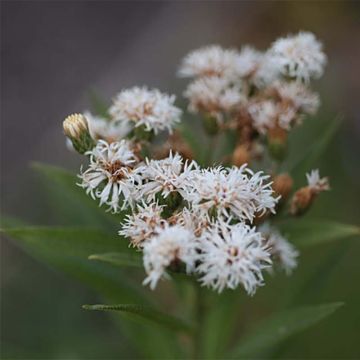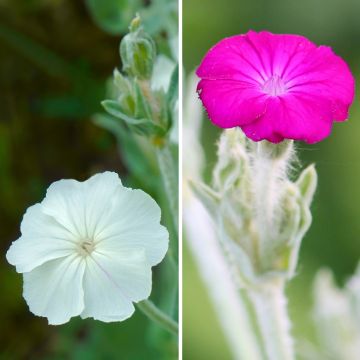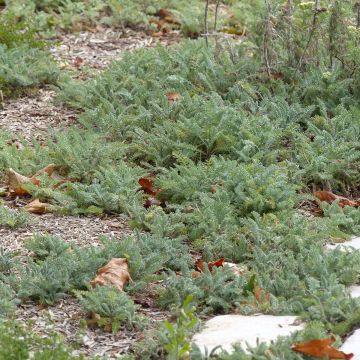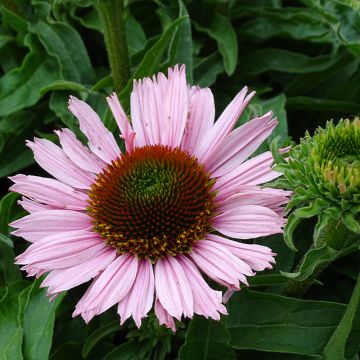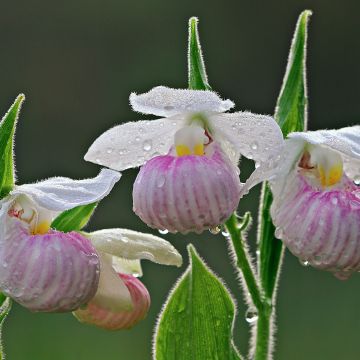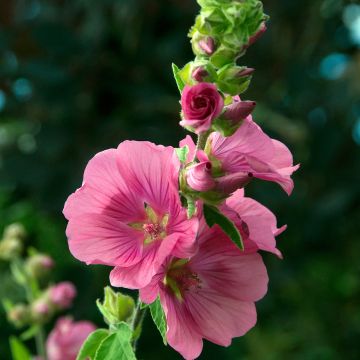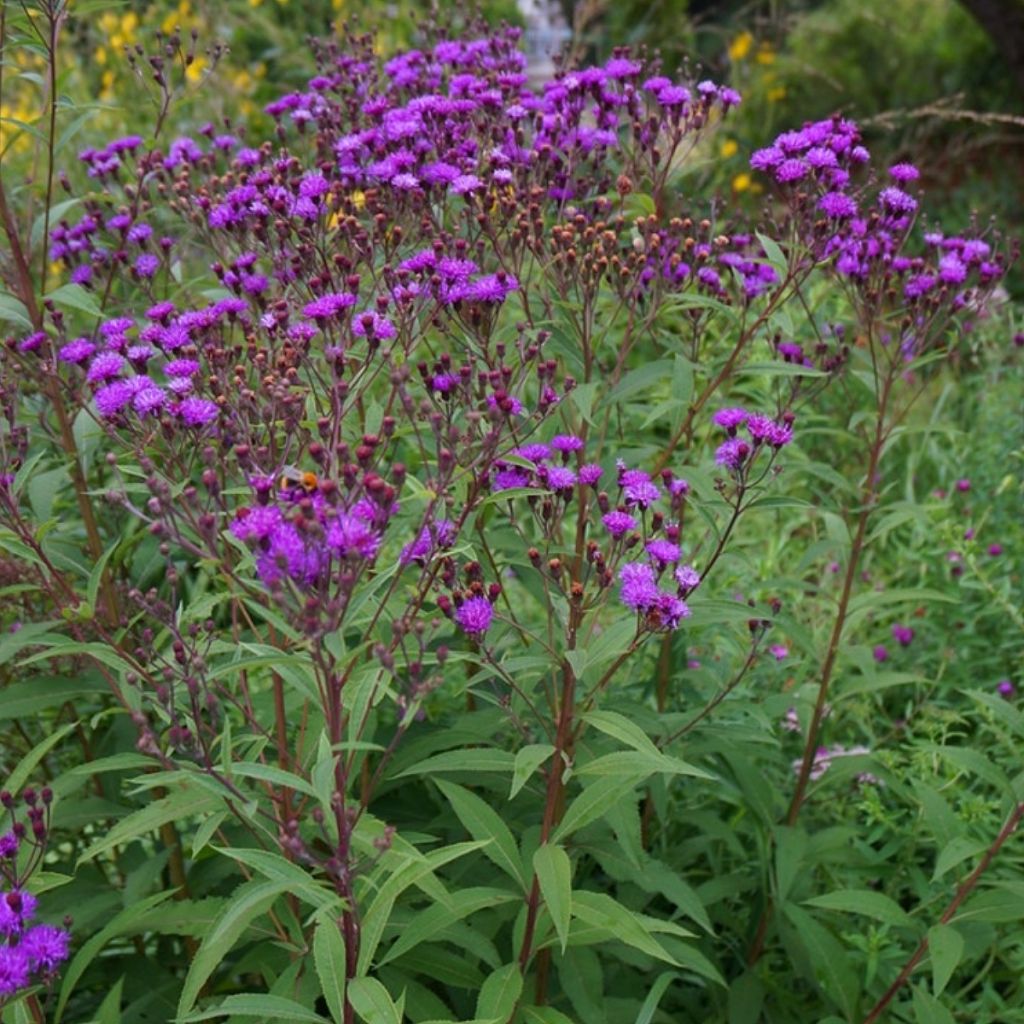

Vernonia arkansana - Ironweed
Vernonia arkansana - Ironweed
Vernonia arkansana
Arkansas Ironweed
Special offer!
Receive a €20 voucher for any order over €90 (excluding delivery costs, credit notes, and plastic-free options)!
1- Add your favorite plants to your cart.
2- Once you have reached €90, confirm your order (you can even choose the delivery date!).
3- As soon as your order is shipped, you will receive an email containing your voucher code, valid for 3 months (90 days).
Your voucher is unique and can only be used once, for any order with a minimum value of €20, excluding delivery costs.
Can be combined with other current offers, non-divisible and non-refundable.
Home or relay delivery (depending on size and destination)
Schedule delivery date,
and select date in basket
This plant carries a 12 months recovery warranty
More information
We guarantee the quality of our plants for a full growing cycle, and will replace at our expense any plant that fails to recover under normal climatic and planting conditions.
Would this plant suit my garden?
Set up your Plantfit profile →
Description
Vernonia arkansana is a large and beautiful wild vernonia native to the north and central United States, a robust cousin of asters with brightly coloured pink-violet flowers in late summer when grown in the damp soils it prefers. This perennial with sturdy leafy stems is still not widely used, but it is a lovely relative of tall asters that endures harsh winters and tolerates all types of moist soil. Plant it in a natural garden, it at the back of a border or near water features. It will look stunning with inulas, aconites, and silver candles.
Vernonia arkansana belongs to the Asteraceae family. It is a majestic plant found in Illinois, Kansas, southern Arkansas, Oklahoma, and the state of Missouri. It can be found along streams, on the edges of swamps, in meadows, and wet thickets, where it can reach up to 2m (7ft) high. In gardens, it is a herbaceous plant anchored by a strong perennial crown that generally reaches 1.50m (5ft) high and spreads 50cm (20in) across. The size of the plant depends on the soil's fertility and moisture content. Cutting back the stems in late spring helps reduce their height. It grows quickly, but it takes two years to establish itself. It forms a clump of tall and robust, straight, hairy, unbranched stems, bearing long, alternate, simple, narrow, pointed, smooth leaves that are medium green-blue. It Flowers from August to September-October depending on the climate. At the tips of the stems, inflorescences resembling small, fluffy, pink-violet pompoms appear grouped in terminal clusters or corymbs. The flowers all open at the same time, attracting a large number of butterflies for a magnificent spectacle. After pollination, rust-coloured seeds form. The vegetation is deciduous, emerging from the ground each spring and dying in autumn.
Very easy to grow in clayey and always slightly moist soils, this superb Vernonia arkansana pairs well with lots of plants and creates magnificent autumn compositions. On the banks of a pond, it spreads rapidly and combines with similar-looking eupatoriums, Lythrum salicaria, Filipendula rubra 'Venusta', Euphorbia palustris. In a wilder style, at the back of a border, this imposing perennial forms a very successful combination with Rudbeckia maxima, tall asters, and tall grasses such as Miscanthus 'Malepartus', Panicum, Stipa...
Vernonia arkansana - Ironweed in pictures
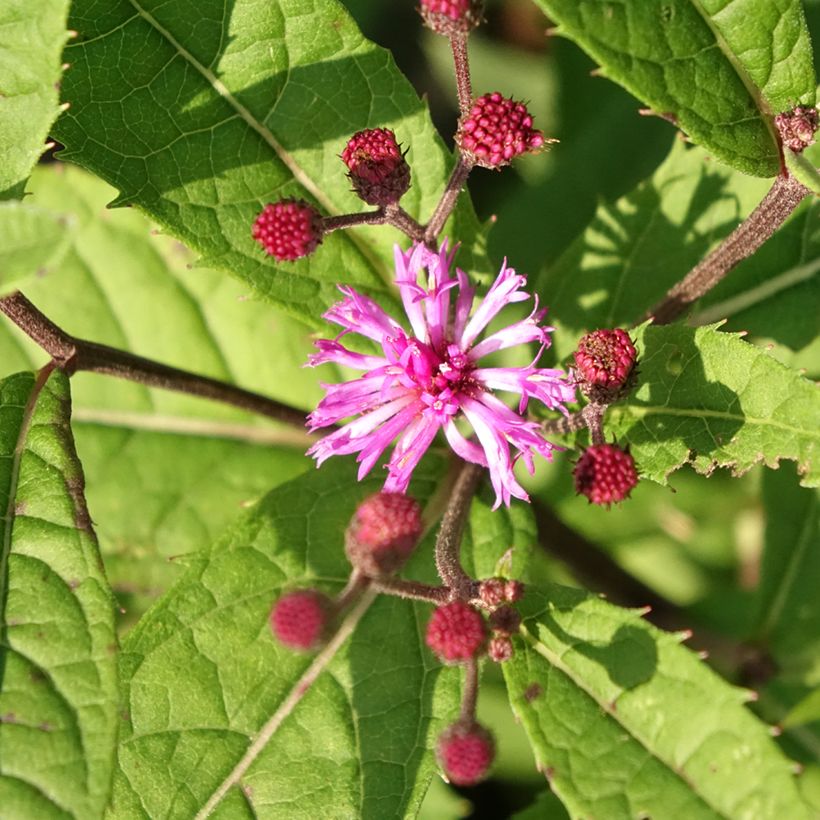

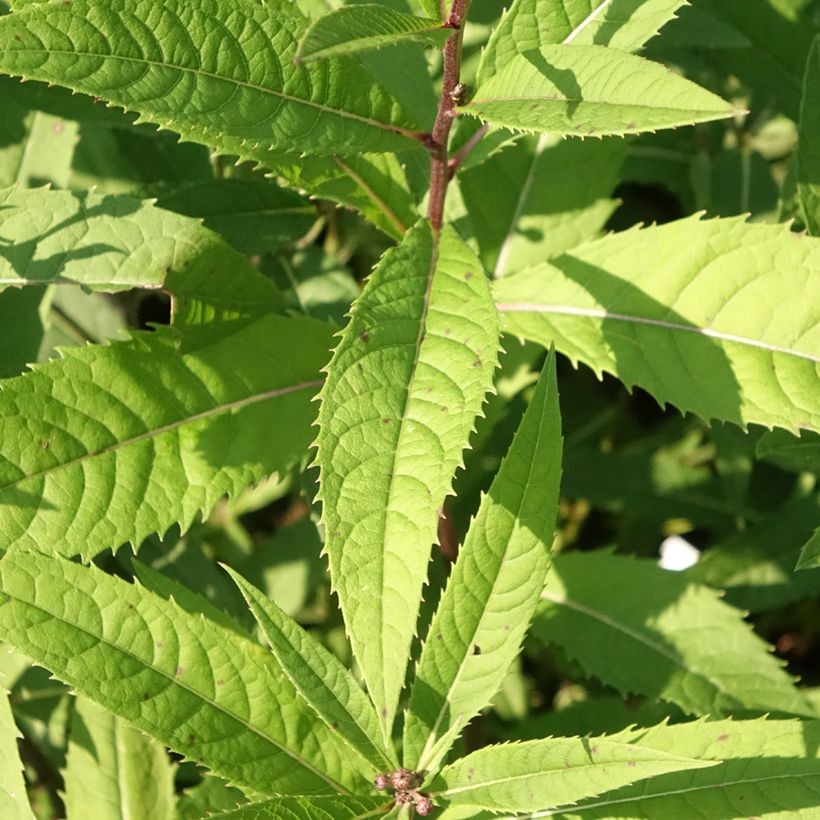

Flowering
Foliage
Plant habit
Botanical data
Vernonia
arkansana
Asteraceae
Arkansas Ironweed
North America
Other Vernonia - Bitterleaf
View all →Planting and care
Vernonia arkansana is an excellent perennial plant that deserves to be better known. It thrives in sunny locations and prefers rich and deep soils, but also tolerates clay soils very well. It cannot tolerate drought, but it grows well in any moist to wet soil. Leaf compost and coarse sand should be incorporated into heavy or compact soil when planting. The clumps can be divided in spring or autumn if they become too large. Cutting back the vegetation in late spring helps to limit the height of the plant. Trim the vegetation after flowering if you want to prevent self-seeding, or otherwise in late winter.
Planting period
Intended location
Care
Planting & care advice
This item has not been reviewed yet - be the first to leave a review about it.
Similar products
Haven't found what you were looking for?
Hardiness is the lowest winter temperature a plant can endure without suffering serious damage or even dying. However, hardiness is affected by location (a sheltered area, such as a patio), protection (winter cover) and soil type (hardiness is improved by well-drained soil).

Photo Sharing Terms & Conditions
In order to encourage gardeners to interact and share their experiences, Promesse de fleurs offers various media enabling content to be uploaded onto its Site - in particular via the ‘Photo sharing’ module.
The User agrees to refrain from:
- Posting any content that is illegal, prejudicial, insulting, racist, inciteful to hatred, revisionist, contrary to public decency, that infringes on privacy or on the privacy rights of third parties, in particular the publicity rights of persons and goods, intellectual property rights, or the right to privacy.
- Submitting content on behalf of a third party;
- Impersonate the identity of a third party and/or publish any personal information about a third party;
In general, the User undertakes to refrain from any unethical behaviour.
All Content (in particular text, comments, files, images, photos, videos, creative works, etc.), which may be subject to property or intellectual property rights, image or other private rights, shall remain the property of the User, subject to the limited rights granted by the terms of the licence granted by Promesse de fleurs as stated below. Users are at liberty to publish or not to publish such Content on the Site, notably via the ‘Photo Sharing’ facility, and accept that this Content shall be made public and freely accessible, notably on the Internet.
Users further acknowledge, undertake to have ,and guarantee that they hold all necessary rights and permissions to publish such material on the Site, in particular with regard to the legislation in force pertaining to any privacy, property, intellectual property, image, or contractual rights, or rights of any other nature. By publishing such Content on the Site, Users acknowledge accepting full liability as publishers of the Content within the meaning of the law, and grant Promesse de fleurs, free of charge, an inclusive, worldwide licence for the said Content for the entire duration of its publication, including all reproduction, representation, up/downloading, displaying, performing, transmission, and storage rights.
Users also grant permission for their name to be linked to the Content and accept that this link may not always be made available.
By engaging in posting material, Users consent to their Content becoming automatically accessible on the Internet, in particular on other sites and/or blogs and/or web pages of the Promesse de fleurs site, including in particular social pages and the Promesse de fleurs catalogue.
Users may secure the removal of entrusted content free of charge by issuing a simple request via our contact form.
The flowering period indicated on our website applies to countries and regions located in USDA zone 8 (France, the United Kingdom, Ireland, the Netherlands, etc.)
It will vary according to where you live:
- In zones 9 to 10 (Italy, Spain, Greece, etc.), flowering will occur about 2 to 4 weeks earlier.
- In zones 6 to 7 (Germany, Poland, Slovenia, and lower mountainous regions), flowering will be delayed by 2 to 3 weeks.
- In zone 5 (Central Europe, Scandinavia), blooming will be delayed by 3 to 5 weeks.
In temperate climates, pruning of spring-flowering shrubs (forsythia, spireas, etc.) should be done just after flowering.
Pruning of summer-flowering shrubs (Indian Lilac, Perovskia, etc.) can be done in winter or spring.
In cold regions as well as with frost-sensitive plants, avoid pruning too early when severe frosts may still occur.
The planting period indicated on our website applies to countries and regions located in USDA zone 8 (France, United Kingdom, Ireland, Netherlands).
It will vary according to where you live:
- In Mediterranean zones (Marseille, Madrid, Milan, etc.), autumn and winter are the best planting periods.
- In continental zones (Strasbourg, Munich, Vienna, etc.), delay planting by 2 to 3 weeks in spring and bring it forward by 2 to 4 weeks in autumn.
- In mountainous regions (the Alps, Pyrenees, Carpathians, etc.), it is best to plant in late spring (May-June) or late summer (August-September).
The harvesting period indicated on our website applies to countries and regions in USDA zone 8 (France, England, Ireland, the Netherlands).
In colder areas (Scandinavia, Poland, Austria...) fruit and vegetable harvests are likely to be delayed by 3-4 weeks.
In warmer areas (Italy, Spain, Greece, etc.), harvesting will probably take place earlier, depending on weather conditions.
The sowing periods indicated on our website apply to countries and regions within USDA Zone 8 (France, UK, Ireland, Netherlands).
In colder areas (Scandinavia, Poland, Austria...), delay any outdoor sowing by 3-4 weeks, or sow under glass.
In warmer climes (Italy, Spain, Greece, etc.), bring outdoor sowing forward by a few weeks.































